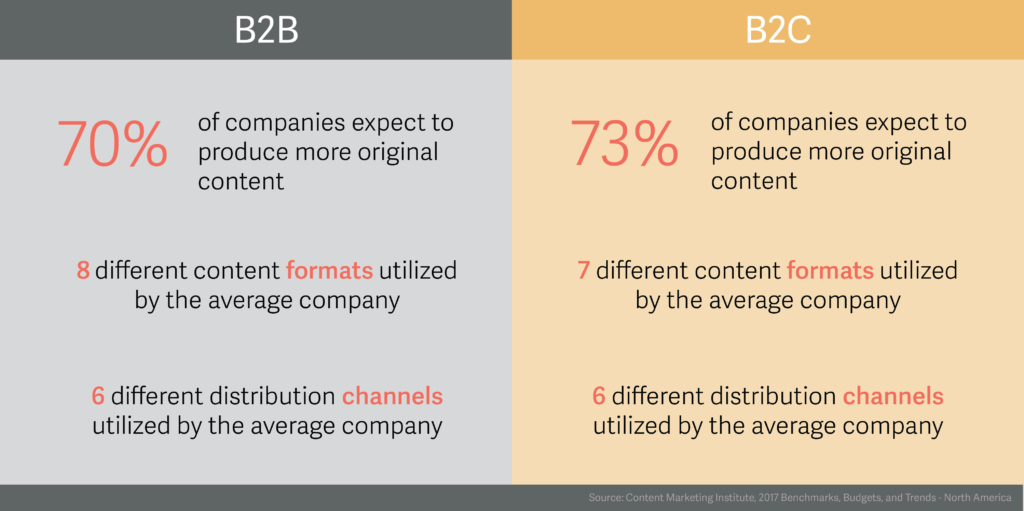“Half of marketers have more digital content than they can effectively manage.”
That was just one of the concerning conclusions drawn by a survey from Accenture Interactive.
Not to be deterred, however, most marketing teams chose to tighten up administration rather than scale back production. More than 75% of both B2B and B2C companies reported plans to create more content in the following years.
Content marketing’s continued maturation throughout the year helped solidify its place in current strategies as well.
More than 60% of companies say they are “extremely” or “very” committed to content marketing, and more than 80% will maintain or increase its budget allocation in the new year.
As a result, many content creators are outlining prolific plans:
Coordinating this volume and variety of content will be a tall task for even the most meticulous marketers. But for those adding a multilingual component to their already multichannel strategies, a special set of scalability questions will come into play.
Bending and Breaking
The process a company uses to start translating is rarely the process it needs to keep translating.
The copy-and-paste collection methods, spreadsheet annotations, and endless email chains that can help you localize your first few webpages will quickly reach a point of diminishing returns when faced with an exponential increase in content.
While persevering without the assistance of specialized translation management software may keep costs down for a time, the speed and quality consequences almost always outweigh any financial savings.
The content import and export tasks bookending actual linguistic activity typically take months for teams who have nothing more than spreadsheets and emails at their disposal.
And reviewing and correcting delicate linguistic issues with those same blunt objects is no recipe for efficiency, either. As a result, an ambitious market penetration plan originally scheduled for Q1 could easily turn into a trimmed-down, end-of-Q3 launch.
The ability to automate translation workflows has been a quantum leap forward, empowering more companies to cope with the ever-increasing demand for localized content. To truly thrive, though, you’ll need to examine the activities remaining after everything that can be automated has.
Adapting and Advancing
Good translation technology makes your process leaner. Great translation technology makes your people better.
Supplying translators with a visual perspective of your content from the start preventatively cures countless errors and limits review requirements. Additionally, keeping key brand assets like style guides and glossaries easily accessible will help teams maintain editor-approved phrasing throughout.
At the managerial level, superior translation software can quickly pay for itself by illuminating key insights into which workflow elements need improvement and which translators deliver the best results.
And with a platform tuned to encourage agile, continuous activity, previously inconceivable amounts of content can suddenly be taken in stride.
Learn More
Don’t let translation frustrations be the limiting factor in your global content strategy. Learn how to scale in style by exploring more from Smartling’s resources center.








